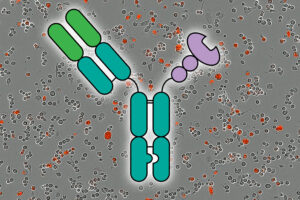
In a groundbreaking study published in Cell Biomaterials, researchers from the University of Pennsylvania have introduced AMP-Diffusion, a generative AI tool capable of designing new antimicrobial peptides (AMPs) with significant bacteria-killing potential. This innovative approach has demonstrated efficacy comparable to FDA-approved drugs in animal models without adverse effects, marking a significant leap in the fight against antibiotic resistance.
The announcement comes as antibiotic resistance continues to outpace the discovery of new antibiotics, posing a severe threat to global health. Past breakthroughs at Penn have shown AI’s ability to sift through vast datasets to identify promising antibiotic candidates. However, this study represents a pivotal advancement, showcasing AI’s potential to invent antibiotic candidates from scratch.
Revolutionizing Antibiotic Discovery
“Nature’s dataset is finite; with AI, we can design antibiotics evolution never tried,” said César de la Fuente, a senior co-author of the study and a Presidential Associate Professor in various disciplines at Penn Engineering. This sentiment underscores the transformative potential of AI in drug discovery, moving beyond traditional methods to explore uncharted territories.
Pranam Chatterjee, the study’s other senior co-author and an Assistant Professor at Penn Engineering, emphasized the innovative use of AI algorithms typically employed in image generation. “We’re leveraging the same AI algorithms that generate images, but augmenting them to design potent new molecules,” he explained.
Two Labs, One Vision
The collaboration between de la Fuente’s and Chatterjee’s labs exemplifies a strategic partnership aimed at overcoming the limitations of conventional drug development. De la Fuente’s lab has a history of utilizing AI to discover antimicrobial molecules in unexpected sources, while Chatterjee’s expertise lies in designing peptides for challenging diseases.
“It seemed like a natural fit,” said Chatterjee. “Our lab knows how to design new molecules using AI, and the de la Fuente Lab knows how to identify strong antibiotic candidates using AI.”
Harnessing AI for Novel Antibiotic Design
AMP-Diffusion employs diffusion models, which differ from other generative AI models by starting with random “noise” and refining it into a coherent output. This method, akin to adjusting a radio to find a clear signal, allows the model to generate effective AMPs by refining sequences of amino acids.
Unlike previous models, AMP-Diffusion builds on ESM-2, a protein language model from Meta, which provides a comprehensive “mental map” of protein structures. This foundation enables AMP-Diffusion to generate candidate AMPs more rapidly and with a higher likelihood of effectiveness.
“Instead of teaching the model the ABCs of biology, we started with a fluent speaker,” said Chatterjee. “That shortcut lets us focus on designing peptides with a real shot at becoming drugs.”
From Concept to Reality
Using AMP-Diffusion, the researchers generated approximately 50,000 candidate amino-acid sequences. “That’s far more candidate drugs than we could ever test,” noted de la Fuente. To streamline the process, the team employed APEX 1.1, another AI tool, to rank candidates based on criteria such as bacteria-killing power and diversity of sequence types.
After synthesizing the 46 most promising candidates, two AMPs demonstrated efficacy on par with established antibiotics like levofloxacin and polymyxin B in treating skin infections in mice. “It’s exciting to see that our AI-generated molecules actually worked,” Chatterjee remarked, highlighting the potential of generative AI in combating antibiotic resistance.
Future Directions and Implications
The success of AMP-Diffusion opens new avenues for refining AI models to target specific bacterial infections and enhance drug-like properties. “We’ve shown the model works, and now if we can steer it to enhance beneficial drug-like properties, we can make ready-to-go therapeutics,” Chatterjee said.
For the researchers, this study serves as a proof of principle, demonstrating that generative AI can transcend traditional methods to design new antibiotics. “Ultimately, our goal is to compress the antibiotic discovery timeline from years to days,” de la Fuente stated.
Funding for this research was provided by various grants and awards, including the Hartwell Individual Biomedical Award and NIH grants. The study’s co-authors include Marcelo D.T. Torres, Tianlai Chen, and Fangping Wan, representing a collaborative effort across institutions.
As antibiotic resistance continues to pose a significant challenge, the development of AI-driven tools like AMP-Diffusion offers a promising solution, potentially revolutionizing the way new antibiotics are discovered and developed.





